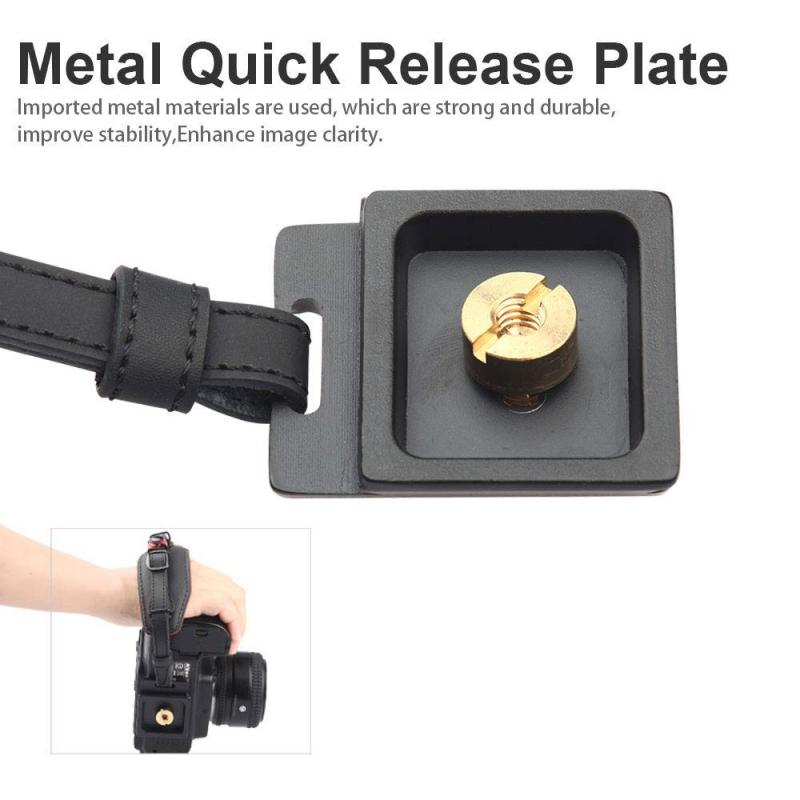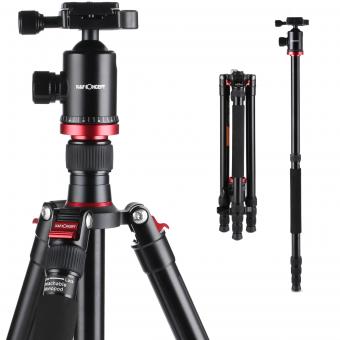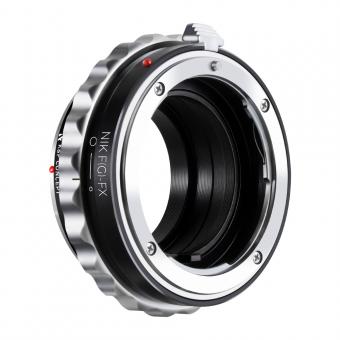Dslr Quick Release Plate ?
A DSLR quick release plate is a small accessory that is used to securely attach a DSLR camera to a tripod or other camera support system. It typically consists of a metal or plastic plate that attaches to the bottom of the camera, and a quick release mechanism that allows for easy and fast attachment and detachment of the camera from the tripod.
The quick release plate is designed to provide a stable and secure connection between the camera and the tripod, ensuring that the camera remains steady during shooting. It allows photographers to quickly switch between handheld shooting and tripod-mounted shooting, without the need to unscrew and reattach the camera every time.
The quick release plate is typically compatible with a specific type of tripod head or camera support system, and it is important to ensure that the plate is compatible with the equipment being used. Many camera manufacturers offer their own quick release plate systems, while there are also universal plates available that can be used with a variety of tripod heads.
1、 Types of DSLR quick release plates
Types of DSLR quick release plates
A DSLR quick release plate is an essential accessory for photographers who use tripods or other camera support systems. It allows for quick and easy attachment and detachment of the camera from the tripod, saving time and ensuring stability. There are several types of DSLR quick release plates available on the market, each with its own unique features and advantages.
1. Arca-Swiss Style: This is one of the most popular types of quick release plates. It features a dovetail design that allows for secure and precise attachment of the camera to the tripod. The Arca-Swiss style plates are compatible with a wide range of tripod heads and accessories, making them versatile and widely used.
2. Manfrotto Style: Manfrotto is a well-known brand in the photography industry, and their quick release plates are widely used. These plates feature a unique locking mechanism that ensures a secure attachment of the camera to the tripod. Manfrotto style plates are known for their durability and reliability.
3. Universal Quick Release Plates: These plates are designed to be compatible with multiple tripod systems. They usually feature a standard 1/4"-20 screw that fits most DSLR cameras. Universal quick release plates are a cost-effective option for photographers who use different tripod systems.
4. L-Bracket Plates: L-bracket plates are specifically designed for DSLR cameras with vertical grips. They provide a quick and easy way to switch between landscape and portrait orientations without having to adjust the tripod head. L-bracket plates are popular among professional photographers who frequently shoot in different orientations.
5. Custom Plates: Some camera manufacturers offer custom quick release plates that are specifically designed for their camera models. These plates often provide a more secure and precise attachment, as they are tailored to fit the camera perfectly.
In conclusion, there are various types of DSLR quick release plates available, each with its own unique features and advantages. The choice of the plate depends on the photographer's specific needs and preferences. It is important to ensure compatibility with the tripod system and camera model for a secure and reliable attachment.
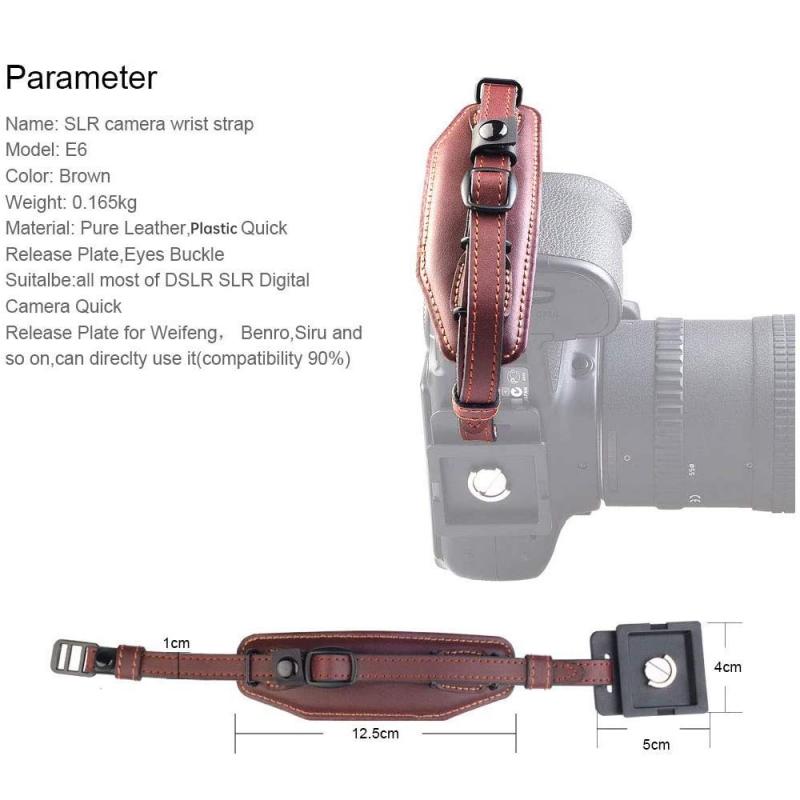
2、 Features to consider when choosing a DSLR quick release plate
Features to consider when choosing a DSLR quick release plate:
1. Compatibility: Ensure that the quick release plate is compatible with your specific DSLR camera model. Different cameras have different mounting systems, so it is important to choose a plate that fits securely and snugly.
2. Material and Durability: Look for a quick release plate made from high-quality materials such as aluminum or magnesium alloy. These materials are lightweight yet sturdy, ensuring the plate can withstand the weight of your camera and any additional accessories.
3. Size and Weight: Consider the size and weight of the quick release plate. A compact and lightweight plate is ideal for travel and outdoor photography, as it adds minimal bulk to your camera setup.
4. Security and Stability: Check for features that ensure a secure and stable connection between the plate and the camera. Look for anti-slip rubber padding or a locking mechanism that prevents accidental detachment.
5. Quick Release Mechanism: Evaluate the ease and speed of the quick release mechanism. A reliable and efficient mechanism allows you to quickly attach and detach your camera from the tripod or other mounting equipment.
6. Versatility: Consider if the quick release plate is compatible with other tripod systems or accessories. Some plates have a universal design that allows them to be used with various tripod brands, expanding their versatility.
7. Additional Features: Look for additional features that enhance the functionality of the quick release plate. This could include built-in bubble levels for precise leveling, multiple mounting holes for different camera orientations, or a built-in Arca-Swiss compatible dovetail for compatibility with a wider range of accessories.
8. Price: Finally, consider the price of the quick release plate. While it is important to invest in a high-quality plate, it is also essential to find one that fits within your budget.
Overall, choosing a DSLR quick release plate involves considering factors such as compatibility, material, size, security, quick release mechanism, versatility, additional features, and price. By carefully evaluating these features, you can find a plate that meets your specific needs and enhances your photography experience.

3、 How to properly attach a DSLR quick release plate
How to properly attach a DSLR quick release plate
Attaching a DSLR quick release plate is a simple process that ensures secure and efficient mounting of your camera onto a tripod or other support system. Here are the steps to properly attach a DSLR quick release plate:
1. Choose the right quick release plate: There are various types and sizes of quick release plates available in the market. Make sure to select a plate that is compatible with your DSLR camera model and the tripod or support system you are using.
2. Locate the tripod mount on your camera: The tripod mount is usually located at the bottom of your DSLR camera. It is a threaded hole where the quick release plate will be attached.
3. Align the quick release plate: Place the quick release plate on a flat surface and align it with the tripod mount on your camera. Ensure that the plate is positioned correctly and the screw hole aligns with the camera's mount.
4. Attach the quick release plate: Once aligned, use the provided screw or lever to securely attach the quick release plate to the camera's tripod mount. Make sure to tighten it properly to avoid any movement or instability.
5. Test the attachment: After attaching the quick release plate, give it a gentle tug to ensure it is securely fastened. Check for any movement or looseness. If everything is secure, you are ready to mount your camera onto a tripod or support system.
It is important to note that some quick release plates come with additional safety features such as secondary locks or anti-twist mechanisms. Familiarize yourself with these features and use them accordingly to enhance the stability and security of your camera setup.
Overall, attaching a DSLR quick release plate is a straightforward process that ensures quick and secure mounting of your camera. By following these steps, you can confidently use your DSLR camera on a tripod or support system for stable and professional photography or videography.
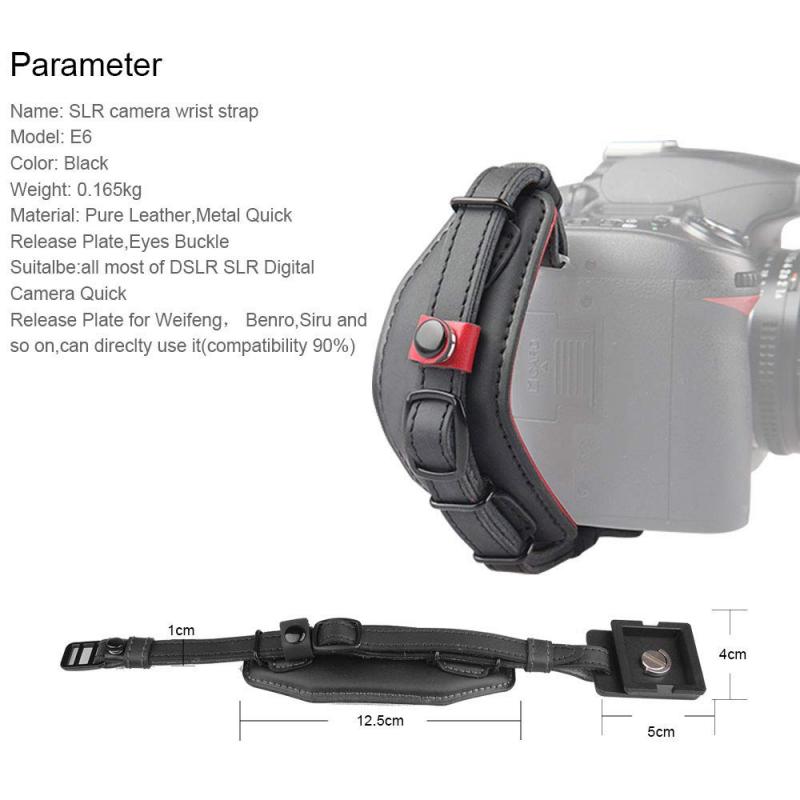
4、 Benefits of using a DSLR quick release plate
Benefits of using a DSLR quick release plate
A DSLR quick release plate is an essential accessory for any photographer using a DSLR camera. It offers several benefits that can greatly enhance the shooting experience and improve the overall efficiency of capturing images.
Firstly, a DSLR quick release plate provides convenience and ease of use. It allows photographers to quickly attach and detach their camera from a tripod or other support system without the need for additional tools or time-consuming adjustments. This is particularly useful when shooting in fast-paced environments or when changing locations frequently.
Furthermore, a quick release plate ensures stability and security. It provides a secure connection between the camera and the tripod, minimizing the risk of accidental drops or damage. This is especially important when working with heavy or expensive camera equipment. Additionally, some quick release plates feature safety mechanisms such as locking mechanisms or anti-slip rubber pads, further enhancing stability and preventing any unwanted movement.
Another advantage of using a DSLR quick release plate is the ability to switch between different camera setups effortlessly. Many photographers use multiple cameras or lenses during a shoot, and a quick release plate allows for quick and seamless transitions between setups. This saves time and eliminates the need for readjusting the tripod or support system each time a different camera or lens is used.
Moreover, a DSLR quick release plate can also improve creativity and versatility in photography. It enables photographers to easily switch between shooting handheld and using a tripod, allowing for more flexibility in capturing different types of shots. Additionally, some quick release plates offer additional features such as built-in spirit levels or adjustable mounting positions, which can aid in achieving precise compositions and leveling the camera.
In conclusion, a DSLR quick release plate offers numerous benefits for photographers. It provides convenience, stability, security, and versatility, ultimately enhancing the shooting experience and allowing for more efficient and creative photography.
